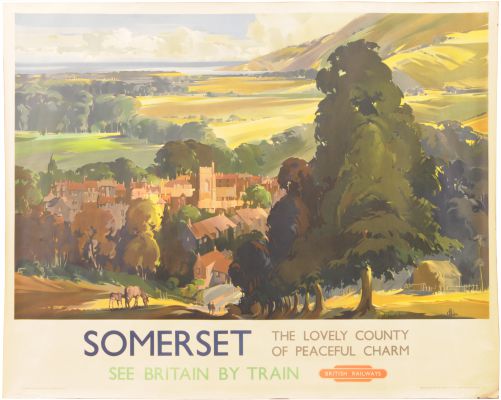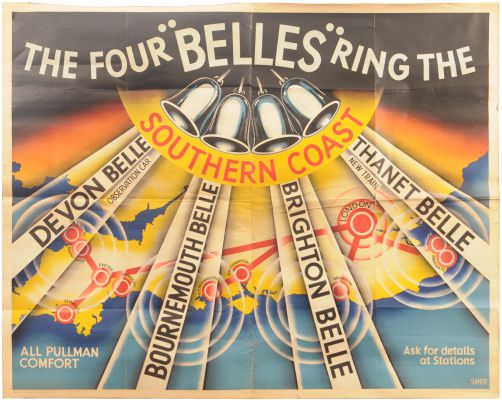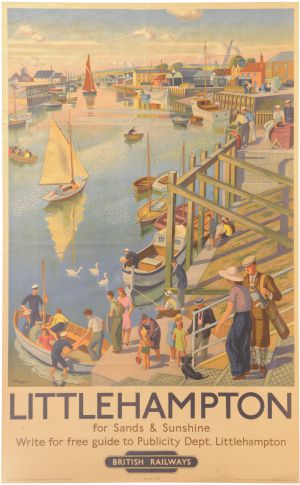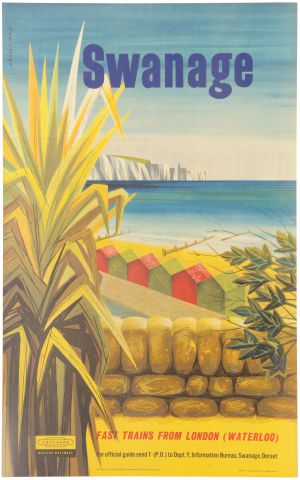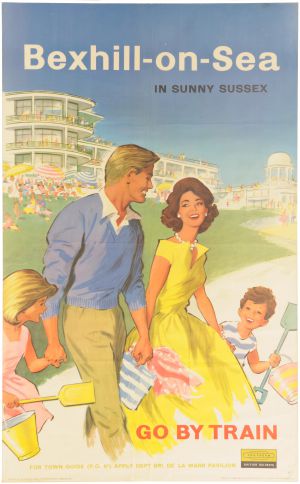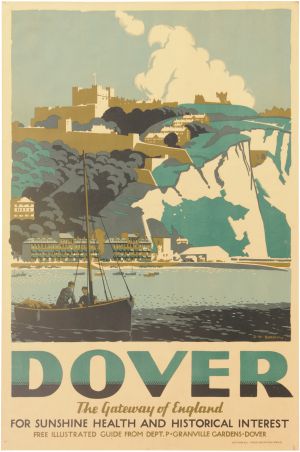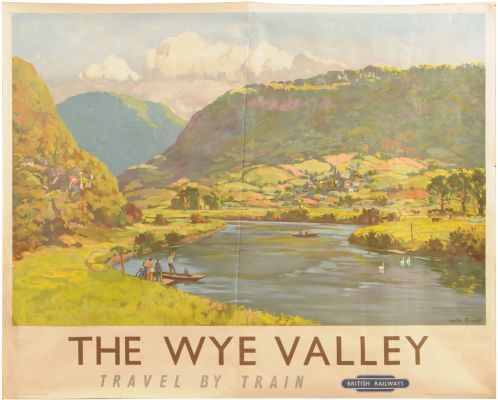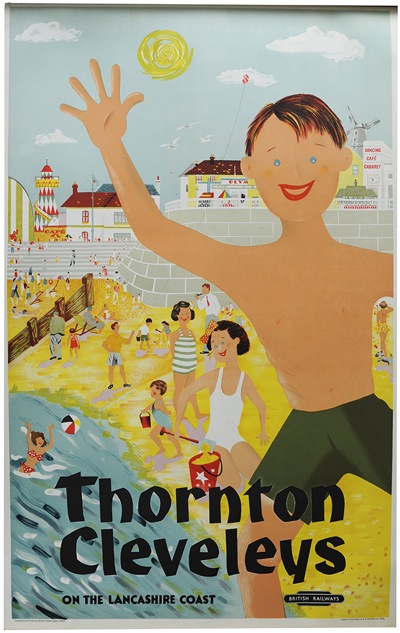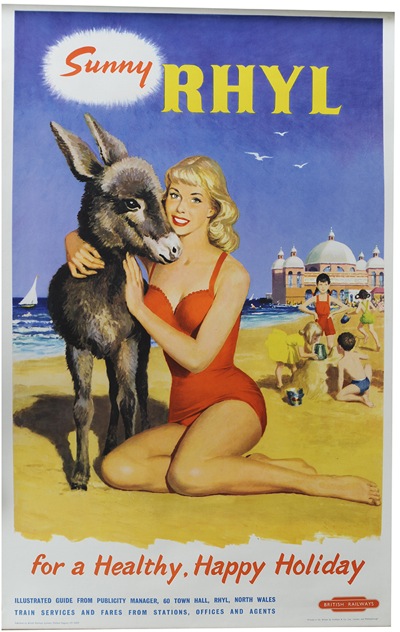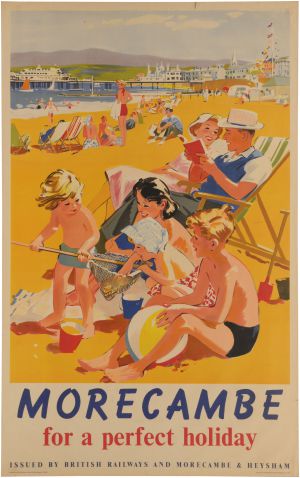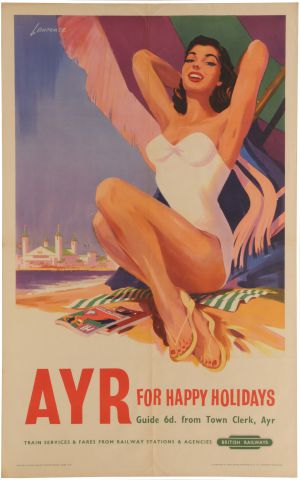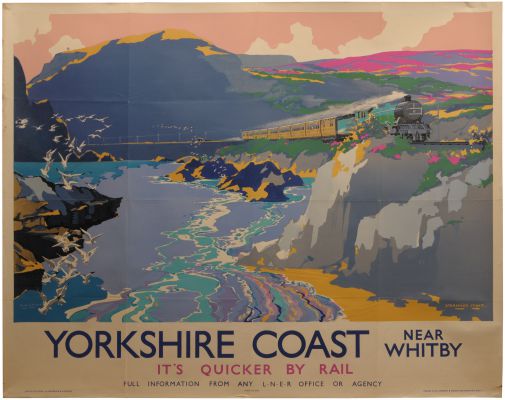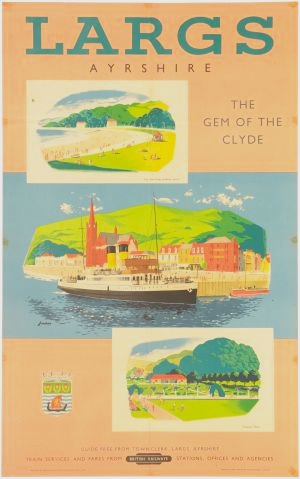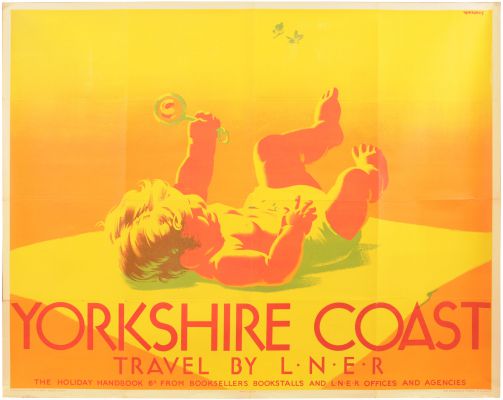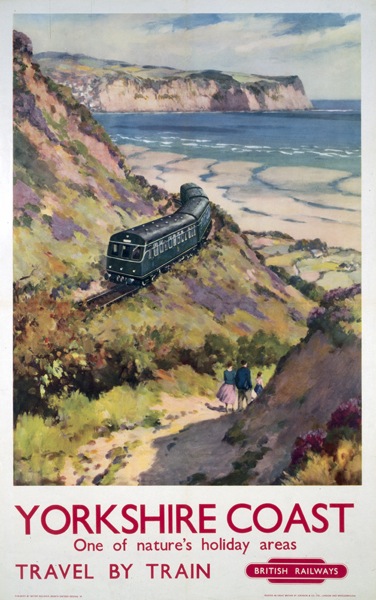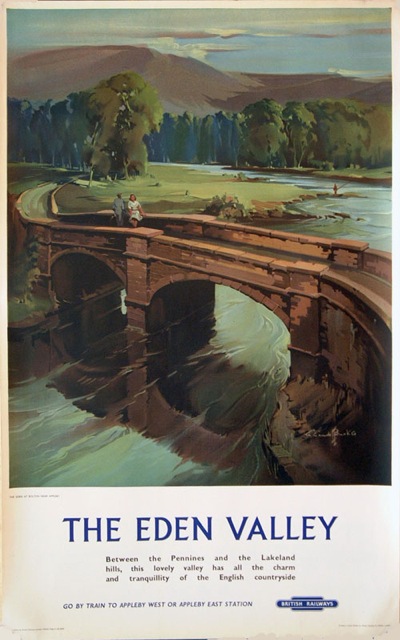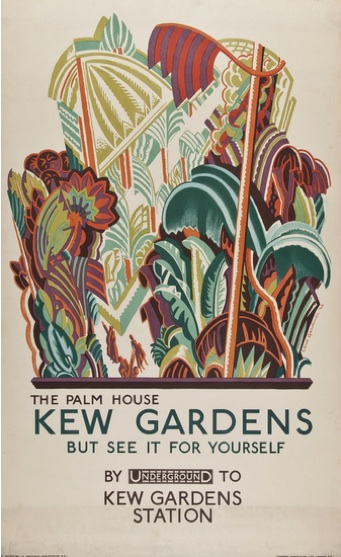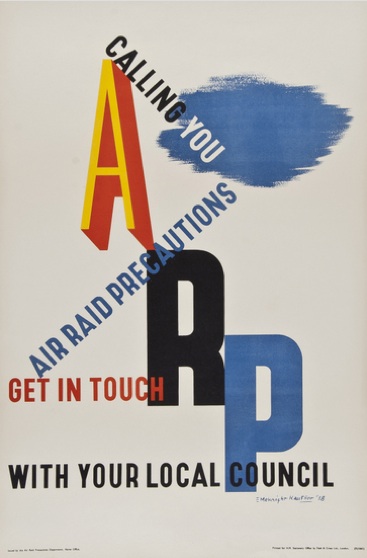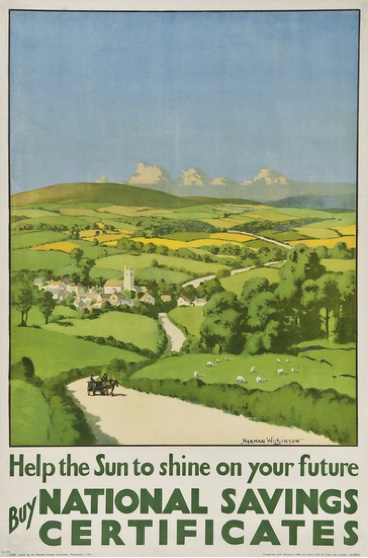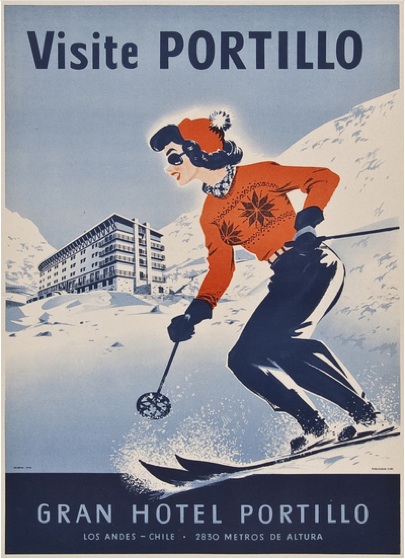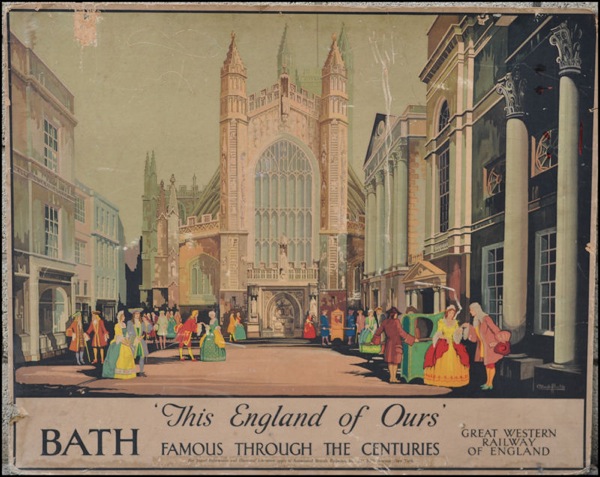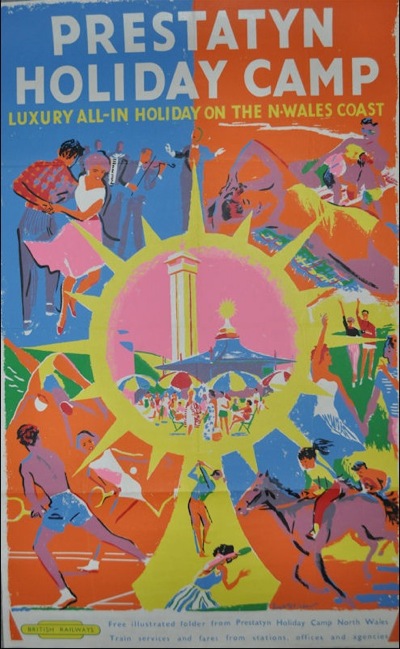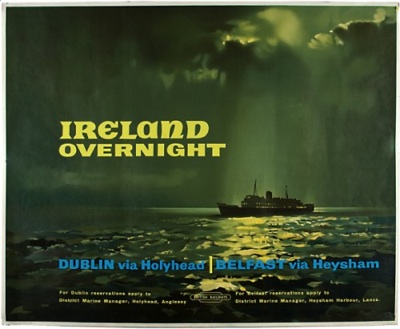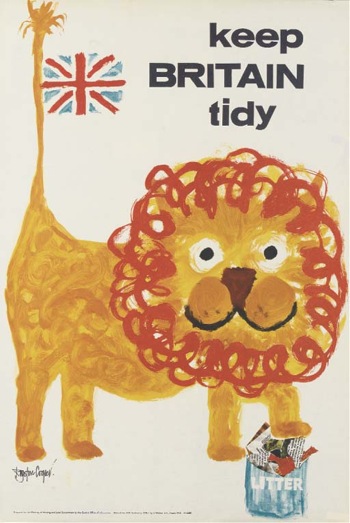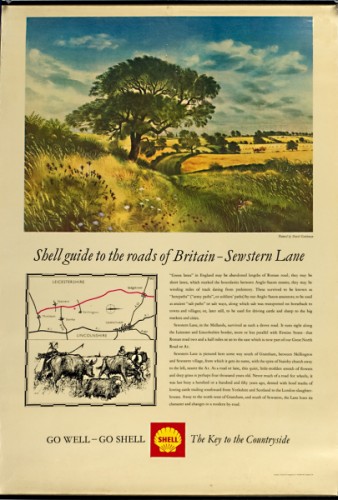Results
I promised a while back that’s I’d revisit the most recent Great Central Railwayana auction and see what the posters on offer actually went for. A course of action necessitated by the fact that railwayana auctions never, it seems, publish an estimate of what they think a poster is going to sell for. This sometimes makes me think that I must be missing out on loads of cheap bargains, passed over by railway enthusiasts who would rather look at pictures of trains, or at a push, landscapes.
This was probably true once upon a time, but it definitely isn’t any more. Posters are expensive wherever you buy them, and railwayana auctions are no exception to this rule. The only difference seems to be that posters with a railway rather than design interest might fetch more than they would do at a more general sale, which is fair enough.
But landscapes and seaside scenes aren’t exactly going cheap either, with this example inexplicably (to me at least) at the top of the range.
Also failing to be bargains are the more decorative posters that I like the best.
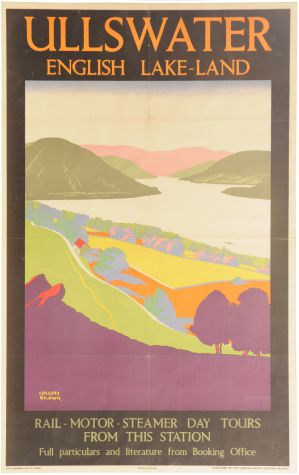
F Gregory Brown, sold for £520.
Even kitsch, which only a few years ago wouldn’t have been very valuable, reaches just the same prices as it would at a general auction sale.
The news isn’t all bad, as a couple of odd bargains did slip through. I very much liked this poster and said so when I looked over the auction. But I was clearly on my own in this.
While the Wye Valley was also inexplicably unpopular for a pretty landscape.
But is there anything else we can conclude beyond my initial assessment that a railwayana auction is unlikely to give you a cheap poster? I’m not sure there is, really. There is a very small chance that you might get a bargain, particularly if you were buying for quality of design rather than for meticulous reproduction of countryside or trains. But equally you might not, and there appears to be no way of telling either. Perhaps the answer is to put a low bid on anything you half-fancy and hope that it works once or twice per sale. But that does seem a bit of a random way of buying, even to me.
If we look wider, there is another, rather terrifying conclusion to draw as well. Because that last auction was actually pretty cheap compared to what else has been going on recently. The most recent GW Railwayana auction was, frankly, boggling in its prices. Here is just a small selection.
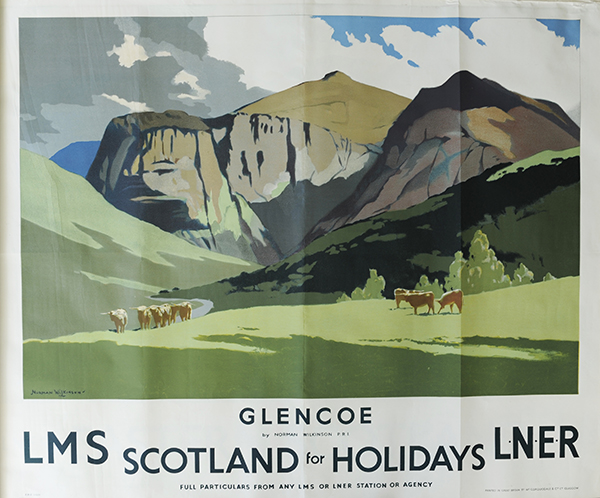
Norman Wilkinson, sold for £1,200
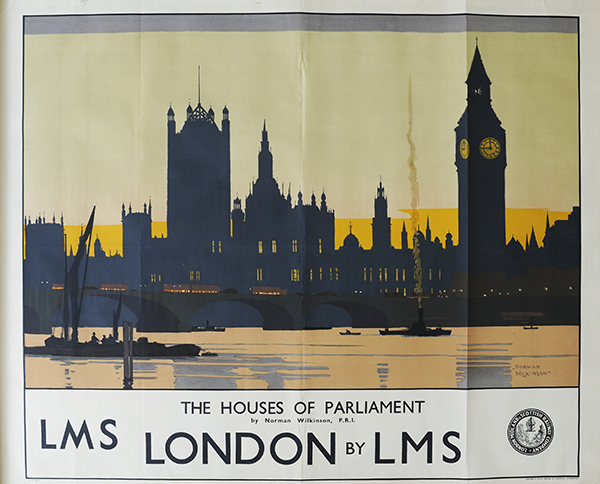
Norman Wilkinson, sold for £3,550
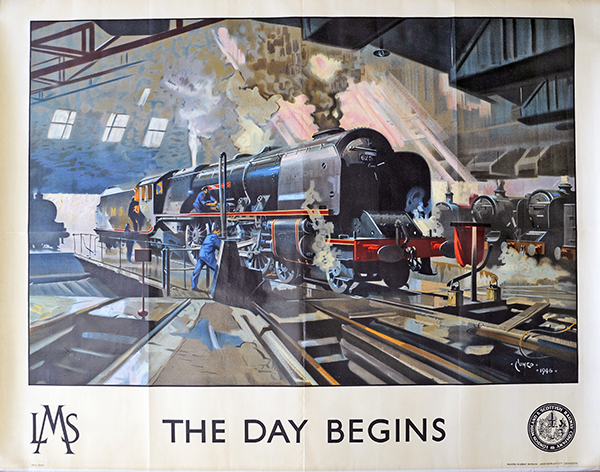
Terence Cuneo, sold for £6,100
To me, that’s all looking, well, expensive; not just beyond Onslows’ prices, but nudging Christies too.
Not everything headed out at that kind of stratospheric level though. At this particular auction, the kitsch didn’t do quite as well, in particular this delightful poster which I took a shine to at the time.
Although nothing went desperately cheap, and the right poster, clearly, could get the money in.
Neither of these sales are exceptions, either. If I go back to the last couple of GCR auctions, the pattern is very much the same.
With just the very occasional bargain to keep my hopes up.
Oh, and this, which I was very disappointed to see going cheap, mainly because we’ve got a copy. Never mind.
Tom Purvis, sold for £230
I could go on, but it would only pain me.
Perhaps the most striking thing about railwayana auctions, though, is how much they, and the market, have changed. The magic of the internet allowed me to revisit a GWRA auction from 2004. It’s a different world. There are only about ten posters for sale, of which the vast majority went for very little. £50 could have bought you either of these for example.
Compare that to their last auction, where there are several dozen posters on offer, some of very high quality, and many fetching extremely high prices.
This is a big change indeed in under ten years, and it’s something that isn’t often acknowledged. That includes by the auctions themselves, for whom it seems posters are a bit of a sideline compared to the real business of metal name plates and station platform signs. But these days, the railwayana auctions together must easily turn over as many posters as Onslows and Christies combined. I shall pay them a bit more respect in future. We all should. And perhaps they could return the favour with some estimates.
